Maui’s Most Famous waterfall
Maui's Most Famous mountain
Lorem ipsum dolor sit amet, consectetur adipiscing elit. Ut elit tellus, luctus nec ullamcorper mattis, pulvinar dapibus leo.Lorem ipsum dolor sit amet, consectetur adipiscing elit. Ut elit tellus, luctus nec ullamcorper mattis, pulvinar dapibus leo.Lorem ipsum dolor sit amet, consectetur adipiscing elit. Ut elit tellus, luctus nec ullamcorper mattis, pulvinar dapibus leo.Lorem ipsum dolor sit amet, consectetur adipiscing elit. Ut elit tellus, luctus nec ullamcorper mattis, pulvinar dapibus leo.Lorem ipsum dolor sit amet, consectetur adipiscing elit. Ut elit tellus, luctus nec ullamcorper mattis, pulvinar dapibus leo.Lorem ipsum dolor sit amet, consectetur adipiscing elit. Ut elit tellus, luctus nec ullamcorper mattis, pulvinar dapibus leo.Lorem ipsum dolor sit amet, consectetur adipiscing elit. Ut elit tellus, luctus nec ullamcorper mattis, pulvinar dapibus leo.Lorem ipsum dolor sit amet, consectetur adipiscing elit. Ut elit tellus, luctus nec ullamcorper mattis, pulvinar dapibus leo.Lorem ipsum dolor sit amet, consectetur adipiscing elit. Ut elit tellus, luctus nec ullamcorper mattis, pulvinar dapibus leo.
1. Haleakalā: The House of the Sun and the Jewel of Maui
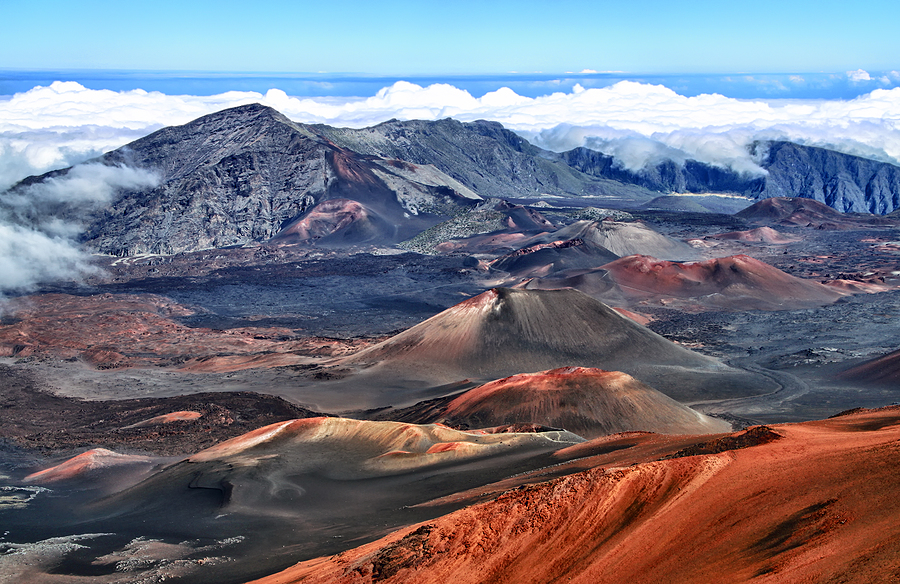
Caldera of the Haleakala volcano Maui, Hawaii - HDR image ** Note: Slight graininess, best at smaller sizes
Haleakalā, also known as the "House of the Sun," is a massive shield volcano that dominates the eastern half of Maui, Hawaii. Rising to an elevation of 10,023 feet, Haleakalā is the highest point on Maui and one of the most significant natural landmarks in the Hawaiian Islands. As part of the Haleakalā National Park, this dormant volcano is known for its stunning sunrises, unique landscapes, and diverse ecosystems. Haleakalā, meaning "House of the Sun" in Hawaiian, is steeped in legend and cultural significance, making it a must-visit destination for anyone exploring Maui. In this comprehensive guide, we will explore the geological history, cultural importance, ecological diversity, and the best ways to experience the magic of Haleakalā.
The Geological Formation of Haleakalā
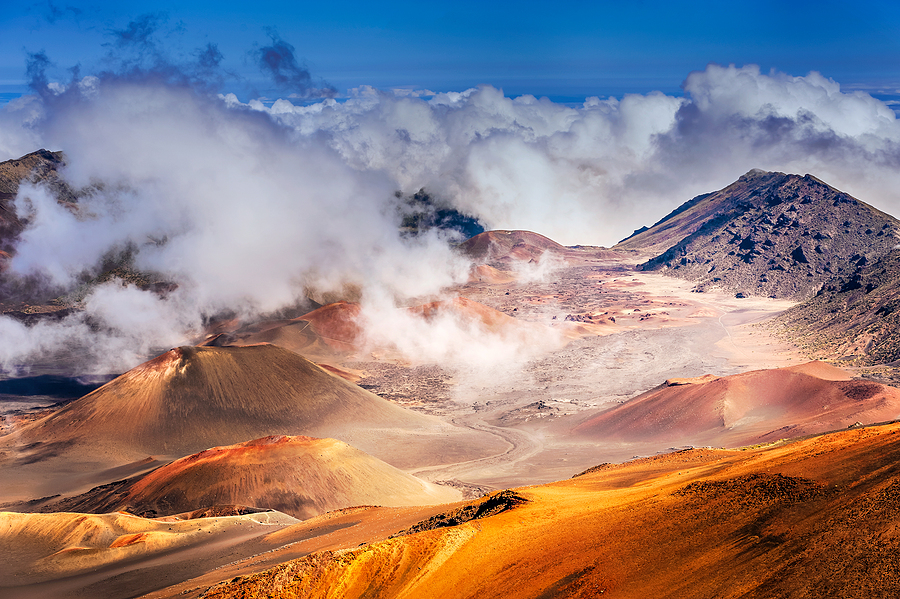
Surrealistic landscape on Haleakala Volcano in Maui Island Hawaii.
Haleakalā is a shield volcano, characterized by its broad, gently sloping shape formed by the eruption of fluid basaltic lava. The volcanic activity that created Haleakalā began over 1 million years ago, as part of the process that formed the Hawaiian Islands. Haleakalā is one of the two major volcanoes that make up the island of Maui, with the other being the older, eroded West Maui Volcano.
The most distinctive feature of Haleakalā is its enormous crater, which measures about 7 miles across, 2 miles wide, and 2,600 feet deep. This vast depression, often referred to as the "Haleakalā Crater," is not a true volcanic crater but rather a valley formed by erosion and collapse. The crater is dotted with cinder cones, lava fields, and unique rock formations, creating a landscape that resembles a lunar surface.
The summit of Haleakalā last erupted around 400-600 years ago, making it a dormant volcano. However, it is not considered extinct, and scientists believe that it could erupt again in the distant future. The unique combination of volcanic geology, high elevation, and proximity to the ocean gives Haleakalā its diverse range of habitats and weather patterns.
The Cultural and Mythological Significance of Haleakalā
For native Hawaiians, Haleakalā holds deep spiritual and cultural significance. According to Hawaiian mythology, Haleakalā is the site where the demigod Maui captured the sun. The legend of Maui and the Sun tells the story of how Maui climbed to the summit of Haleakalā and lassoed the sun with a strong rope. He did this to slow the sun's journey across the sky, allowing more daylight for his mother, Hina, to dry her kapa (cloth). This legend is why Haleakalā is often called the "House of the Sun," and the tradition of watching the sunrise from its summit remains a powerful and moving experience for visitors.
Haleakalā was also an important site for ancient Hawaiian rituals and ceremonies. The summit was considered sacred, and it was a place where priests (kahuna) conducted prayers and offerings to honor the gods. The volcanic landscape, with its stark beauty and ethereal mist, was seen as a place of divine power, connecting the heavens and the Earth.
Haleakalā National Park: A Natural Wonder
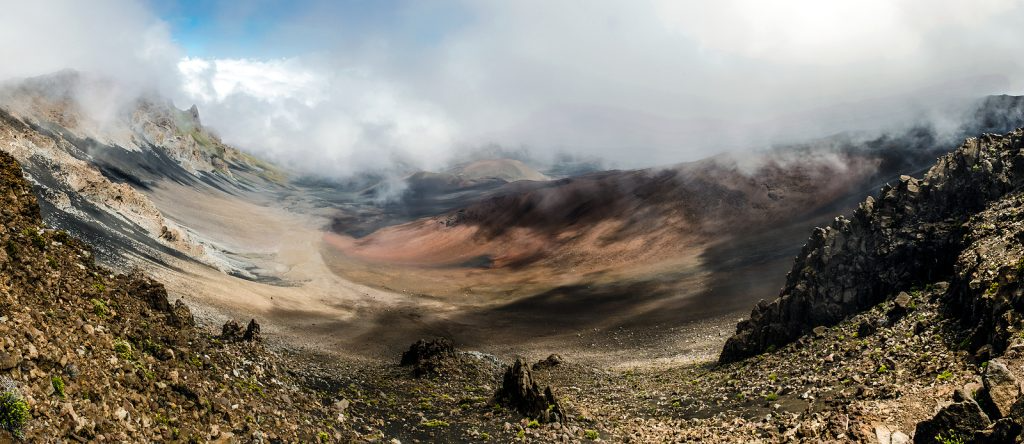
Haleakalā National Park is an American national park located on the island of Maui in the state of Hawaii. The park covers an area of 134.62 square km (77.98 square km is a wilderness area).
Today, Haleakalā is protected as part of Haleakalā National Park, which spans over 33,000 acres and is divided into two distinct sections: the Summit District and the Kīpahulu District. The park was established in 1961 to preserve the unique landscapes, rare ecosystems, and cultural sites found within its boundaries.
Summit District
The Summit District of Haleakalā National Park is one of the most popular tourist attractions in Maui. Visitors flock to the summit to witness the spectacular sunrise, often described as a spiritual and awe-inspiring experience. The summit area offers breathtaking views of the Haleakalā Crater, as well as distant vistas of the Pacific Ocean and the neighboring Hawaiian Islands, including Molokaʻi, Lānaʻi, and Hawaiʻi (the Big Island).
The Summit District is accessible via the Haleakalā Highway (Route 378), a winding road that climbs from sea level to over 10,000 feet in elevation. The drive is an adventure in itself, offering stunning views of Maui's diverse landscapes, from lush tropical forests to barren, windswept volcanic slopes. At the top, the Haleakalā Visitor Center provides educational exhibits, ranger programs, and information about the park's natural and cultural history.
One of the highlights of the Summit District is the Pā Ka'oao Trail, a short but steep path that leads to a lookout point with panoramic views of the crater. From here, you can see the colorful cinder cones and the expansive, otherworldly terrain that makes Haleakalā so unique.
Kīpahulu District
The Kīpahulu District, located on the southeastern coast of Maui, offers a stark contrast to the arid landscapes of the Summit District. This area is known for its lush rainforests, waterfalls, and coastal views. One of the main attractions in the Kīpahulu District is the Pīpīwai Trail, a 4-mile round-trip hike that takes visitors through a dense bamboo forest and past the stunning Waimoku Falls, a 400-foot waterfall that cascades down a sheer cliff.
The Kīpahulu District is also home to the 'Ohe'o Gulch, often referred to as the "Seven Sacred Pools." This series of cascading waterfalls and natural swimming holes is a popular spot for visitors looking to cool off and enjoy the pristine waters. The pools are part of the Pālikea Stream, which flows from the high elevations of Haleakalā down to the ocean.
The Diverse Ecosystems of Haleakalā
Haleakalā is known for its incredible biodiversity, with a wide range of ecosystems that vary from the summit to the coast. The park is home to over 800 species of plants, animals, and insects, many of which are found nowhere else on Earth. The extreme variations in climate, elevation, and topography have created unique habitats, from subalpine deserts to tropical rainforests.
The Haleakalā Silversword
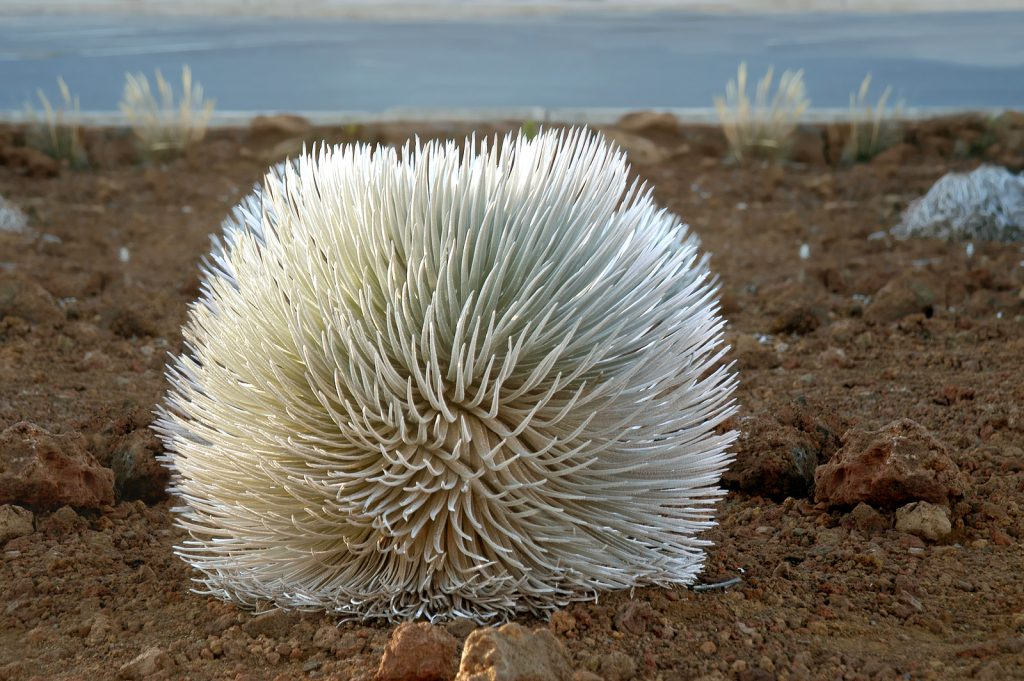
Rare and endangered Silver Sword on Haleakala Mountain in Haleakala National Park in Maui Hawaii. Plant dies after blooming.
One of the most famous and unique plants found in Haleakalā National Park is the Haleakalā Silversword (Argyroxiphium sandwicense). This rare, endangered plant grows only on the high slopes of Haleakalā and is adapted to the harsh, dry conditions of the subalpine desert. The silversword has silver, sword-shaped leaves that reflect sunlight and help reduce water loss. It can live for up to 50 years but blooms only once, producing a spectacular flower stalk before dying.
The silversword is a symbol of the unique flora of Haleakalā and is a prime example of the park's delicate ecosystems. Conservation efforts are in place to protect the silversword from threats such as climate change, invasive species, and human impact.
Native Birds of Haleakalā
Haleakalā is a critical habitat for several endangered bird species, including the 'Iʻiwi (Hawaiian honeycreeper), the 'Āpapane, and the Nēnē (Hawaiian goose). The Nēnē, Hawaii's state bird, was once on the brink of extinction but has made a remarkable recovery thanks to conservation efforts. These birds can often be seen in the park, especially in the Summit District, where they feed on the nectar of native flowers.
Haleakalā Sunrise and Sunset: A Must-See Experience
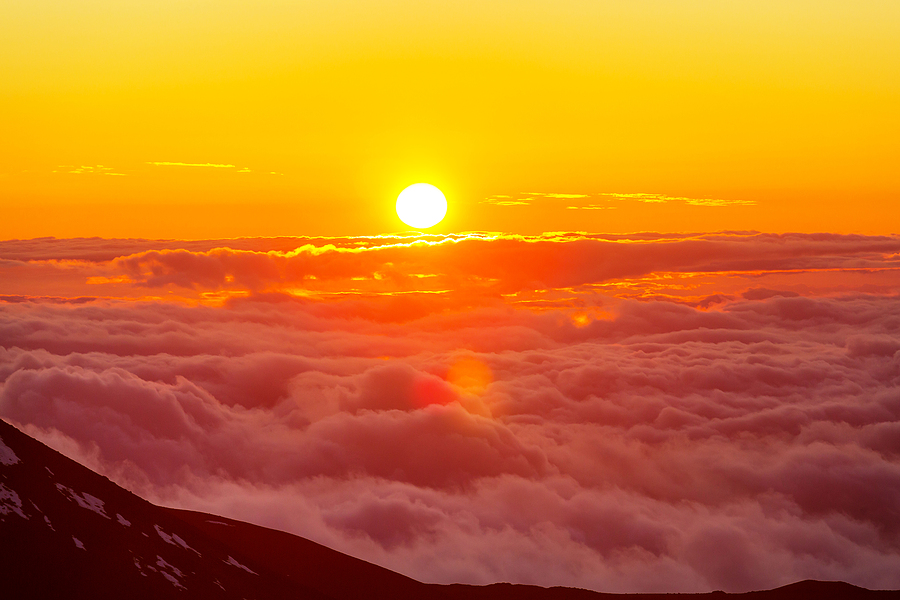
Sunset on summit Haleakala, Hawaii
Watching the sunrise from the summit of Haleakalā is one of the most unforgettable experiences in Hawaii. The view of the sun rising above the clouds, casting vibrant colors across the volcanic landscape, is nothing short of magical. To witness the sunrise, visitors must make a reservation in advance due to the high demand and limited parking at the summit. Arriving early, often before 4 a.m., is necessary to secure a good spot and prepare for the cold temperatures at high altitude.
For those who prefer a less crowded experience, watching the sunset from Haleakalā can be equally spectacular. The colors of the setting sun combined with the unique geological features of the crater create a stunning, otherworldly scene. After sunset, the summit becomes one of the best places in Hawaii for stargazing, thanks to the clear, dark skies and lack of light pollution.
Hiking and Exploring Haleakalā
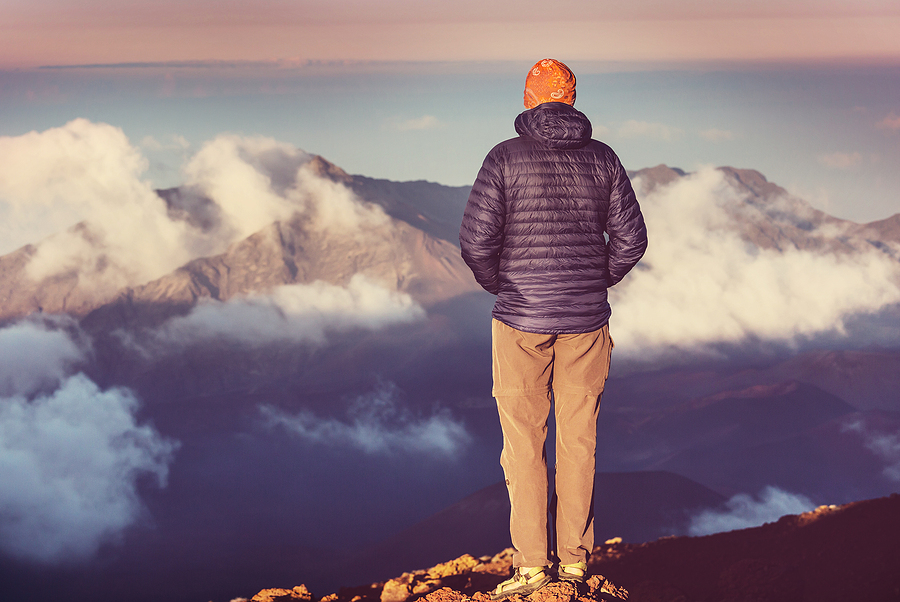
Beautiful sunrise scene on Haleakala volcano, Maui island, Hawaii
Haleakalā National Park offers a variety of hiking trails that cater to all levels of experience, from short walks to challenging backcountry treks. Some of the most popular trails include:
Sliding Sands Trail (Keoneheʻeheʻe Trail): This strenuous trail descends into the crater, offering hikers a close-up view of the cinder cones and colorful lava fields. The trail is about 11 miles round trip and is recommended for experienced hikers.
Halemauʻu Trail: This trail offers a shorter hike into the crater, with spectacular views of the Koʻolau Gap. It is about 8 miles round trip and provides a challenging but rewarding experience.
Hosmer Grove Trail: Located near the park entrance, this short, easy trail takes visitors through a forest of exotic trees planted by early settlers. It is a great spot for birdwatching.
Conclusion
Haleakalā is more than just a mountain; it is a place of profound natural beauty, rich cultural heritage, and scientific importance. Whether you are hiking its trails, witnessing the breathtaking sunrise, or exploring its diverse ecosystems, Haleakalā offers an experience that is both humbling and awe-inspiring. As the "House of the Sun," this majestic volcano stands as a testament to the power of nature and the deep connection between the land and the Hawaiian people. A visit to Haleakalā is an unforgettable journey into the heart of Maui's natural wonders.
The Cultural Significance of the West Maui Mountains
The West Maui Mountains hold deep cultural and spiritual significance for the Hawaiian people. The range, known as Mauna Kahalawai, was considered a sacred place, home to powerful gods and spirits. Ancient Hawaiians revered the mountains as the realm of Kanaloa, the god of the ocean, and Kūkaʻemoku, the guardian spirit of the land. The mountains were seen as a bridge between the physical and spiritual worlds, where prayers and offerings were made to honor the gods.
The valleys and ridges of the West Maui Mountains were important centers of settlement and agriculture for ancient Hawaiians. The fertile valleys, such as ʻĪao Valley, were used for growing kalo (taro), a staple crop that formed the basis of the Hawaiian diet. The abundance of freshwater from the mountain streams allowed for sophisticated irrigation systems, known as ʻauwai, to be developed. These systems channeled water to the taro patches (loʻi), sustaining communities for centuries.
One of the most culturally significant sites in the West Maui Mountains is the ʻĪao Valley, which was a sacred burial ground for Hawaiian chiefs (aliʻi). The valley was also the site of the Battle of Kepaniwai in 1790, a pivotal conflict in Hawaiian history where King Kamehameha I defeated the forces of Maui, paving the way for the unification of the Hawaiian Islands.
Exploring the West Maui Mountains: Hiking and Trails
The West Maui Mountains offer a variety of hiking trails and outdoor experiences, from easy walks through lush rainforests to challenging treks along steep ridges. The trails provide access to breathtaking viewpoints, hidden waterfalls, and unique native ecosystems.
ʻĪao Valley State Monument: One of the most popular destinations in the West Maui Mountains is the ʻĪao Valley State Monument, home to the iconic ʻĪao Needle. The ʻĪao Needle, or Kūkaʻemoku, is a 1,200-foot tall rock spire that rises dramatically from the valley floor. It is one of the most photographed landmarks on Maui and a must-visit for anyone exploring the West Maui Mountains.
The ʻĪao Needle Lookout Trail and Ethnobotanical Loop is an easy, family-friendly hike that offers stunning views of the needle and the surrounding valley. The trail is about 0.6 miles round trip and features interpretive signs that provide information about native Hawaiian plants and the cultural history of the area.
Waiheʻe Ridge Trail: The Waiheʻe Ridge Trail is one of the best hikes in the West Maui Mountains, offering spectacular views of the ocean, valleys, and rainforest-covered peaks. The trail is about 4 miles round trip, with an elevation gain of 1,500 feet, making it a moderately challenging hike.
The trailhead is located near the Makai Research Pier, and the path ascends through a dense forest of guava and eucalyptus trees before opening up to panoramic views of the Waiheʻe Valley. The trail culminates at a viewpoint overlooking the deep, green valleys and the distant cliffs of the West Maui Mountains, providing a stunning reward for the effort.
Kapalua Coastal Trail: For a less strenuous option, the Kapalua Coastal Trail offers a scenic walk along the coastline with views of the West Maui Mountains in the background. The trail is about 3.5 miles round trip and is relatively flat, making it suitable for all ages. The path winds through the Kapalua Resort, past beautiful beaches, rocky shoreline, and coastal cliffs, with the green peaks of Mauna Kahalawai towering in the distance.
The Unique Ecosystems of the West Maui Mountains
The West Maui Mountains are home to a diverse range of ecosystems, from tropical rainforests at lower elevations to cloud forests near the summit of Puʻu Kukui. The high rainfall and varied microclimates have created habitats for numerous native plants and animals, many of which are found nowhere else in the world.
Native Flora
The rainforests of the West Maui Mountains are dominated by native Hawaiian trees such as the 'Ōhi'a lehua, known for its bright red flowers, and the koa tree, which is prized for its durable wood. The summit of Puʻu Kukui is covered with a unique type of forest called a bog, where low-growing, water-tolerant plants like mosses, ferns, and the rare Hawaiian lobelioid thrive in the wet, spongy soil.
Native Fauna
The forests of the West Maui Mountains provide habitat for several native bird species, including the 'apapane, 'amakihi, and the endangered nēnē (Hawaiian goose). The region is also home to the rare 'ākepa, a small honeycreeper known for its distinctive red plumage. In addition to birds, the streams and rivers support native fish and shrimp, such as the 'o'opu, a species of goby that can climb waterfalls using its suction-like mouth.
Waterfalls of the West Maui's Mountains
The abundant rainfall in the West Maui's Mountains feeds numerous streams and rivers, creating stunning waterfalls that cascade down the steep cliffs. Some of the most famous waterfalls include:
Wailuku River Falls: This picturesque waterfall can be seen along the Honoapiʻilani Highway, offering a breathtaking view of water plunging down the cliffs into the lush valley below.
Makamakaʻole Falls: A multi-tiered waterfall located along the Waiheʻe Ridge Trail, known for its beauty and the vibrant greenery surrounding it.
Honokōhau Falls: One of the tallest waterfalls on Maui, Honokōhau Falls drops over 1,100 feet and is best viewed from a helicopter tour due to its remote location.
Tips for Visiting the West Maui Mountains
When planning a visit to the West Maui Mountains, here are a few tips to ensure a safe and enjoyable experience:
Check the Weather: The weather in the mountains can change rapidly, with frequent rain showers and mist. Bring a rain jacket and be prepared for wet conditions.
Wear Proper Footwear: Trails can be muddy and slippery, so wear sturdy hiking shoes with good traction.
Respect the Environment: The West Maui Mountains are home to fragile ecosystems and cultural sites. Stay on marked trails, do not pick plants, and avoid disturbing wildlife.
Conclusion
The West Maui Mountains offer an unparalleled combination of natural beauty, cultural history, and adventure. Whether you are hiking through lush rainforests, exploring hidden waterfalls, or learning about the ancient legends that shaped this landscape, the West Maui Mountains provide a journey into the heart of Maui's wild and untamed spirit.